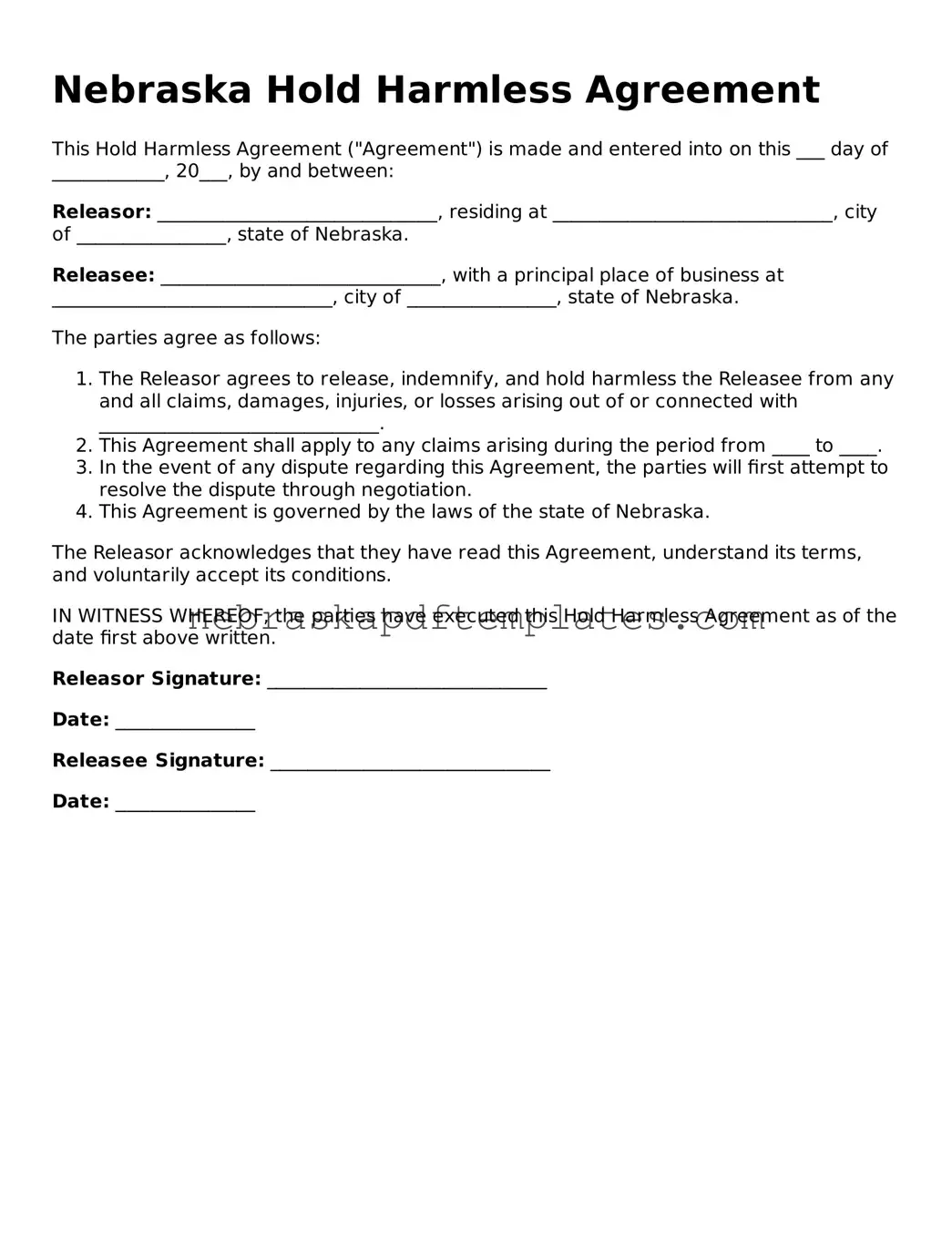What is a Nebraska Hold Harmless Agreement?
A Nebraska Hold Harmless Agreement is a legal document that protects one party from liability for any injuries or damages that may occur during an event or activity. Essentially, it is a way for one party to agree not to hold another party responsible for certain risks. This agreement is commonly used in various contexts, such as rental agreements, sports events, or community gatherings.
Who typically uses a Hold Harmless Agreement?
Hold Harmless Agreements are often utilized by organizations, businesses, and individuals who host events or provide services. For example:
-
Event organizers may require participants to sign the agreement to mitigate risks associated with the event.
-
Property owners may ask renters to sign it to protect themselves from potential claims arising from injuries on their property.
-
Service providers, such as contractors, may use it to ensure that clients cannot hold them liable for certain risks associated with their work.
What are the key components of a Hold Harmless Agreement?
A well-drafted Hold Harmless Agreement typically includes several important elements:
-
Identification of Parties:
Clearly state the names of the parties involved in the agreement.
-
Scope of Liability:
Define the specific risks and liabilities that are being waived.
-
Duration:
Indicate how long the agreement will remain in effect.
-
Signatures:
Ensure that all parties sign the document to indicate their agreement to the terms.
Is a Hold Harmless Agreement enforceable in Nebraska?
Yes, a Hold Harmless Agreement can be enforceable in Nebraska, provided it is drafted properly. Courts generally uphold these agreements as long as they are clear, unambiguous, and do not violate public policy. However, there are limits. For instance, an agreement cannot protect a party from liability resulting from their own gross negligence or intentional misconduct.
Do I need a lawyer to create a Hold Harmless Agreement?
While it is not strictly necessary to hire a lawyer to create a Hold Harmless Agreement, doing so can be beneficial. A legal professional can help ensure that the document is comprehensive, compliant with Nebraska law, and tailored to your specific needs. This can provide additional peace of mind and reduce the risk of future disputes.
Can a Hold Harmless Agreement be revoked?
Yes, a Hold Harmless Agreement can be revoked or modified, but this typically requires mutual consent from all parties involved. If one party wishes to change the terms or cancel the agreement, it is essential to document this change in writing. Clear communication and mutual agreement are key to avoiding misunderstandings.
